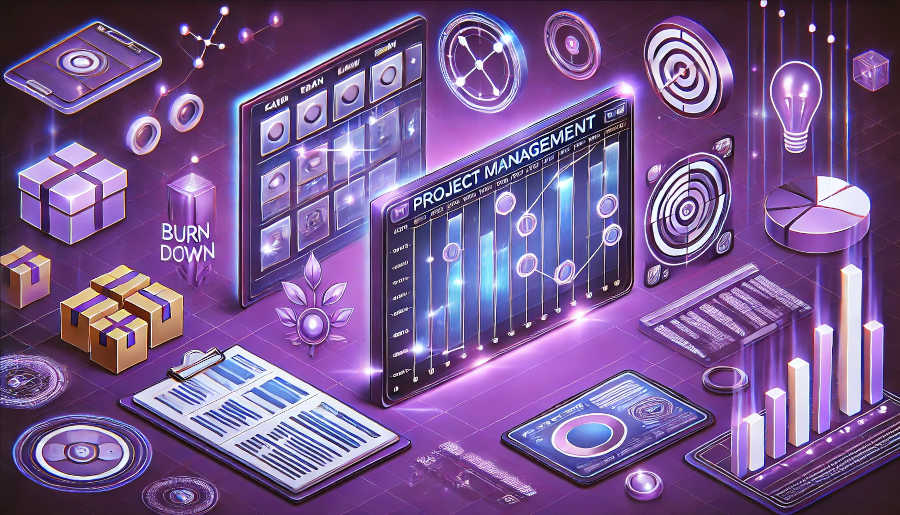Gantt charts are a widely used project management tool, offering a visual representation of a project's schedule. They display tasks, their start and end dates, and dependencies, enabling project managers to plan, track, and communicate project progress effectively. However, creating an accurate and useful Gantt chart is not without its challenges. This article will explore some of the common difficulties faced in Gantt chart drawing and propose practical solutions to overcome them.
One of the primary purposes of a Gantt chart is to provide a clear overview of the project timeline. It helps in identifying the critical path, which is the sequence of tasks that determines the overall project duration. By visualizing the schedule, stakeholders can easily understand when each task will start and end, and how they are interconnected. This transparency aids in setting realistic expectations, allocating resources efficiently, and ensuring that the project stays on track.
Moreover, Gantt charts serve as a communication tool among team members, project managers, and clients. They can be used to present the project plan, progress updates, and any changes in the schedule. A well-drawn Gantt chart can facilitate discussions, clarify responsibilities, and enhance collaboration, ultimately leading to the successful execution of the project.
Inaccurate Task Estimation
One of the most common challenges in Gantt chart drawing is inaccurate task estimation. Estimating the time, effort, and resources required for each task is crucial for creating a realistic project schedule. However, many factors can contribute to inaccurate estimates, such as lack of historical data, unfamiliarity with the task, and unforeseen circumstances.
When task estimates are too optimistic, it can lead to unrealistic deadlines and a compressed schedule. This can cause stress among team members, increase the risk of errors, and ultimately result in project delays. On the other hand, overly pessimistic estimates can lead to wasted resources and a longer project duration than necessary.
To address this challenge, project managers should gather as much information as possible before making task estimates. This may include consulting with subject matter experts, reviewing past projects with similar tasks, and breaking down complex tasks into smaller, more manageable components. Additionally, it is important to build some flexibility into the schedule to account for unexpected events. By using techniques such as three-point estimation (estimating the best-case, worst-case, and most likely scenarios) and adding contingency time, project managers can create more accurate and reliable Gantt charts.
Difficulty in Identifying Dependencies
Another significant challenge in Gantt chart drawing is accurately identifying task dependencies. Dependencies refer to the relationships between tasks, where one task must be completed before another can start. Failing to identify and properly represent these dependencies can lead to a disjointed schedule and potential project delays.
There are several types of dependencies, including finish-to-start (FS), start-to-start (SS), finish-to-finish (FF), and start-to-finish (SF). Understanding these different types and correctly applying them in the Gantt chart is essential. For example, in a software development project, the coding task may have a finish-to-start dependency on the requirements gathering task. This means that the coding cannot begin until the requirements have been fully defined and approved.
To overcome the difficulty in identifying dependencies, project managers should engage in detailed planning sessions with the project team. This involves discussing the logical flow of the project, determining which tasks are sequential and which can be parallel, and documenting the dependencies clearly. Using project management software that has features for easily defining and visualizing dependencies can also be helpful. By taking the time to accurately identify and represent dependencies in the Gantt chart, project managers can ensure that the project progresses smoothly and efficiently.
Resource Allocation Issues
Resource allocation is a critical aspect of Gantt chart drawing. It involves assigning the necessary resources, such as personnel, equipment, and materials, to each task in the project. However, many projects face challenges in resource allocation, such as over-allocation, under-allocation, and resource conflicts.
Over-allocation occurs when more resources are assigned to a task than are available or needed. This can lead to inefficiencies, increased costs, and potential burnout among team members. Under-allocation, on the other hand, can result in tasks taking longer to complete than planned, causing delays in the project schedule. Resource conflicts arise when the same resource is required for multiple tasks at the same time, creating a scheduling dilemma.

To address resource allocation issues, project managers should first conduct a thorough resource assessment. This includes identifying the available resources, their skills and capabilities, and any limitations or constraints. Once the resources are identified, project managers can use techniques such as resource leveling to balance the workload and avoid over-allocation. Resource leveling involves adjusting the start and end dates of tasks to ensure that resources are used evenly over time. Additionally, project managers should communicate with the resource owners and team members to ensure that everyone is aware of the resource allocation plan and any potential conflicts. By effectively managing resource allocation in the Gantt chart, project managers can optimize the use of resources and keep the project on track.
Lack of Flexibility in the Chart
Gantt charts are often created with a fixed set of tasks and timelines. However, in real-world projects, changes are inevitable. New requirements may arise, unforeseen issues may occur, or the project scope may need to be adjusted. A lack of flexibility in the Gantt chart can make it difficult to accommodate these changes, leading to a disconnect between the planned and actual project progress.
When changes occur, project managers may need to update the Gantt chart to reflect the new information. This can involve adding or removing tasks, adjusting task durations, and redefining dependencies. However, if the Gantt chart is not designed to be flexible, making these changes can be time-consuming and may require significant rework.
To address the lack of flexibility in the Gantt chart, project managers should use project management software that allows for easy modification of the schedule. Many modern software tools offer features such as drag-and-drop functionality, automatic recalculation of dependencies, and the ability to save different versions of the Gantt chart. Additionally, project managers should adopt an iterative approach to project planning, leaving room for changes and adjustments as the project progresses. By building flexibility into the Gantt chart, project managers can better respond to changing circumstances and keep the project on track.
Data Integration Challenges
In many projects, Gantt charts need to be integrated with other project management tools and systems, such as resource management software, issue tracking systems, and financial management tools. However, integrating data from different sources can be a complex and challenging task.
Data integration issues can arise due to differences in data formats, data structures, and data semantics. For example, the Gantt chart may use a specific date format, while the resource management system may use a different format. This can lead to data discrepancies and errors when attempting to integrate the two systems. Additionally, the data in different systems may be updated at different times, making it difficult to ensure that the Gantt chart reflects the most current information.
To overcome data integration challenges, project managers should establish a clear data integration strategy. This may involve using middleware or data integration tools to bridge the gap between different systems. These tools can help in converting data formats, mapping data structures, and synchronizing data updates. Additionally, project managers should define data governance policies to ensure that data is accurate, consistent, and up-to-date across all systems. By addressing data integration challenges, project managers can ensure that the Gantt chart provides a comprehensive and accurate view of the project status.
Conclusion
Gantt charts are a valuable tool for project management, but they come with their fair share of challenges. Inaccurate task estimation, difficulty in identifying dependencies, resource allocation issues, lack of flexibility, and data integration challenges can all impact the effectiveness of the Gantt chart. However, by implementing the solutions discussed in this article, project managers can overcome these challenges and create more accurate, useful, and flexible Gantt charts.
Accurate task estimation is the foundation of a successful Gantt chart. By gathering sufficient information, consulting with experts, and using appropriate estimation techniques, project managers can create more realistic schedules. Identifying and representing dependencies correctly is also crucial for ensuring the logical flow of the project. Engaging in detailed planning sessions and using project management software can help in this regard.
Resource allocation issues can be addressed through thorough resource assessment and the use of techniques such as resource leveling. Building flexibility into the Gantt chart and using software that allows for easy modification can help project managers respond to changes effectively. Finally, by establishing a clear data integration strategy and implementing data governance policies, project managers can ensure that the Gantt chart is integrated with other project management tools and systems, providing a comprehensive view of the project status.
In conclusion, with careful planning, attention to detail, and the use of appropriate tools and techniques, project managers can overcome the common challenges in Gantt chart drawing and use this powerful tool to drive project success. By creating accurate, flexible, and integrated Gantt charts, project managers can better plan, track, and communicate project progress, ultimately leading to the successful delivery of the project.
ARTICLE TITLE :Common challenges and solutions in Gantt chart drawing ,AUTHOR :ITpmlib

















